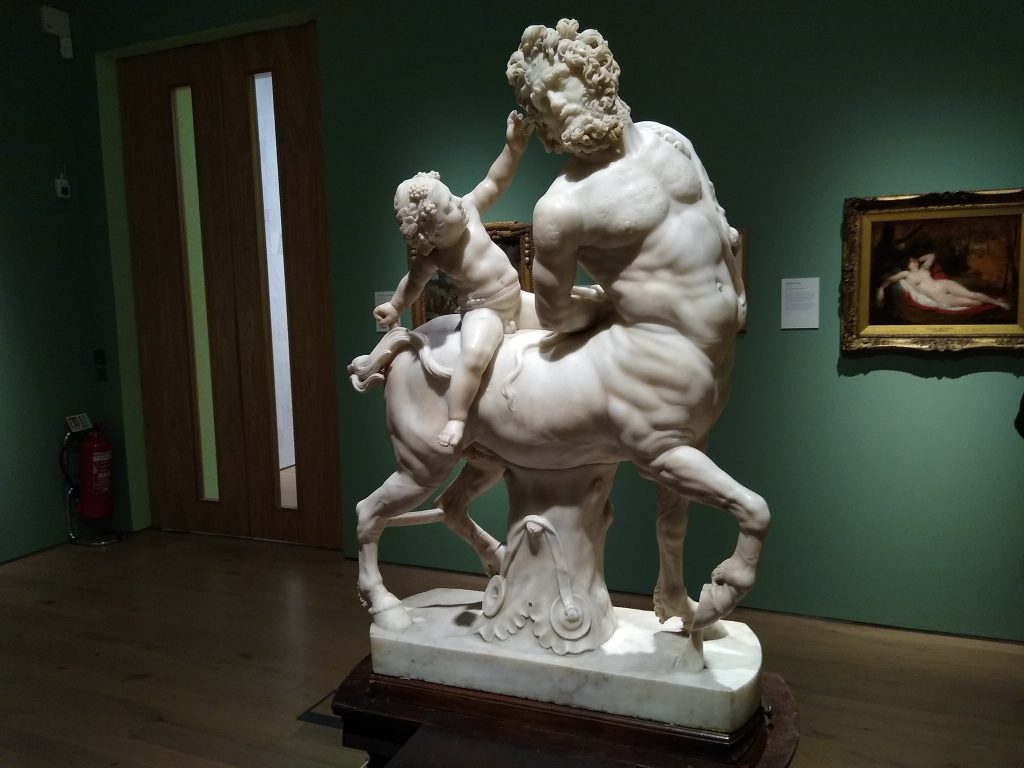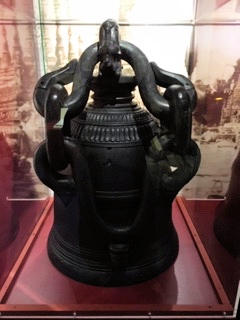….now centaurs find permanent homes at York Art Gallery.
Two eye-catching marble sculptures, currently on display at York Art Gallery, could be formally added to York’s museum collection

They are not quite at the Elgin Marbles level of interest but their fate is likely to be less controversial than the Councils 1978 decision to hand over the famous “Burmese Bell”.
The Burmese Bell was displayed in the Guildhall after it had been presented to the Lord Mayor in 1855 by officers of the 51st Regiment. They had taken the trophy in 1852 when the British Army stormed the Great Shwedagon Temple during the second Burmese war. The six hundredweight bell was relocated to the Castle Museum archive following the destruction of the Guildhall during WW2.
There was much agonising in the Council chamber about whether it should be given a spot in the newly restored Guildhall. By 1978 the Council had decided (narrowly) to offer the bell back to the regiment. The Council decision was not taken on ethical grounds – there was no “Elgin Marbles” style “Return the Bell to Burma” campaign – but rather the Council did not want to foot restoration and maintenance bills.

The Bell now resides in the Kings Own Yorkshire Light Infantry museum in Doncaster*.
There may be less handwringing about the pair of marble sculptures, Young Centaur (tempted by love) and Old Centaur (bound by love), both probably carved by Bartolomeo Cavaceppi (1716-1799) in Rome in around 1755. They are thought to have been copied from sculptures were found together at Hadrian’s Villa in Tivoli in 1736. The originals dated from about 1AD
They were bought by the city Council in the 1940s from Wentworth Woodhouse when the estate was split up, specifically to be displayed in the Assembly Rooms.
The centaurs were loaned to York Art Gallery in the 1970s and were later put into storage. Following York Conservation Trust’s purchase of the Assembly Rooms, uncertainty arose about the ownership of the centaurs.
Following discussions, York Conservation Trust’s board has agreed that it would be willing to transfer the sculptures to the city’s museum collection. These collections are owned by the council and managed by York Museums’ Trust under a long-term loan and management agreement.
Members of the council’s Executive will be asked next week whether they would agree to move the centaurs into the city’s museum collections. Doing so would ensure that the statues remain as part of the city’s cultural legacy, are accessible to York residents for perpetuity, and will confirm their ownership.
The statues currently form part of The National Gallery Masterpiece Tour 2019 at York Art Gallery from 13 July – 22 September 2019. They are among a number of works inspired by the classical ideals of ancient art and complement Nicolas Poussin’s The Triumph of Pan, one of the National Gallery’s most significant works, which is the exhibition’s centrepiece this summer
*More details of the Burma Bell can be found in a volume of the York Historian (vol 24) published in 2007 which is kept in the City Archives.

